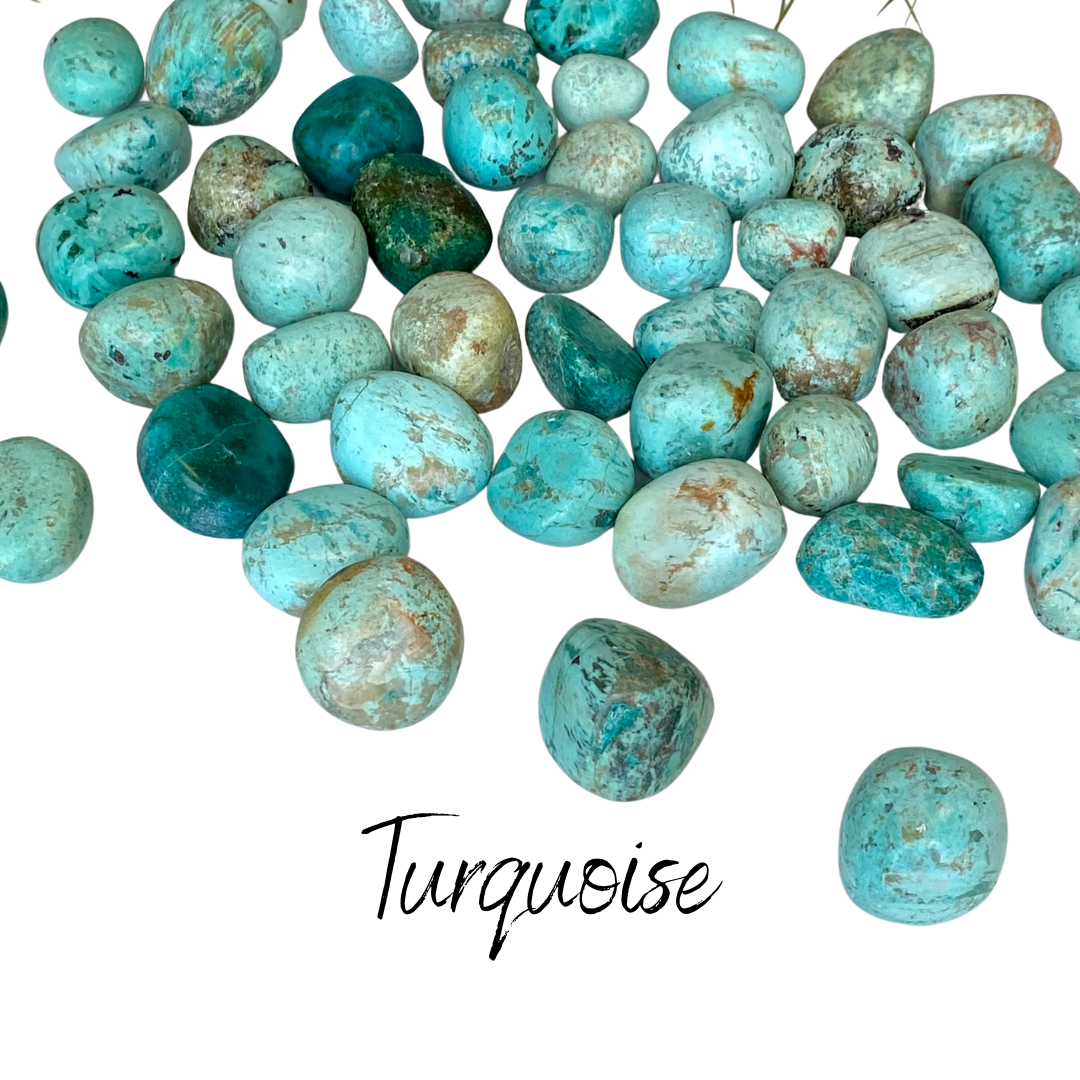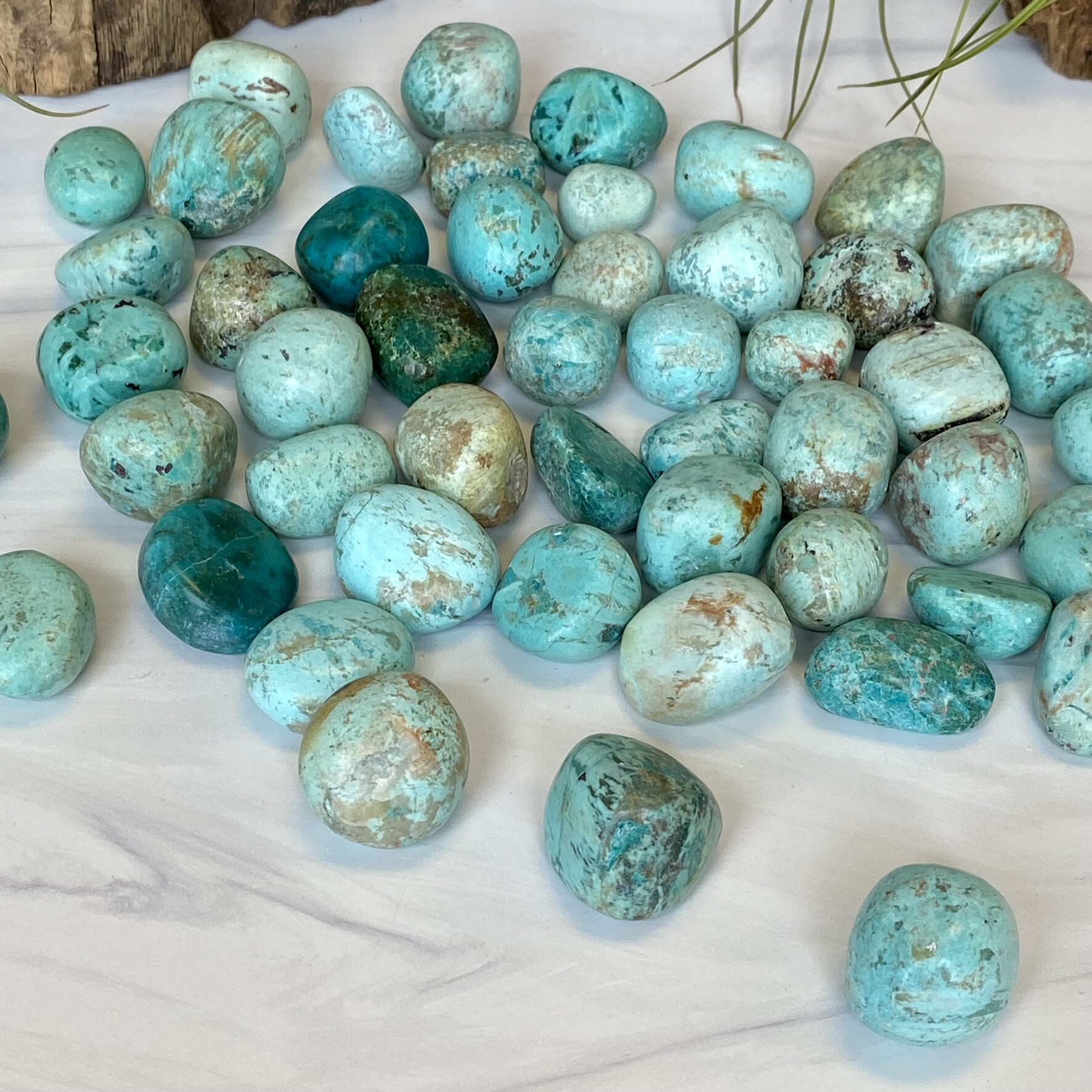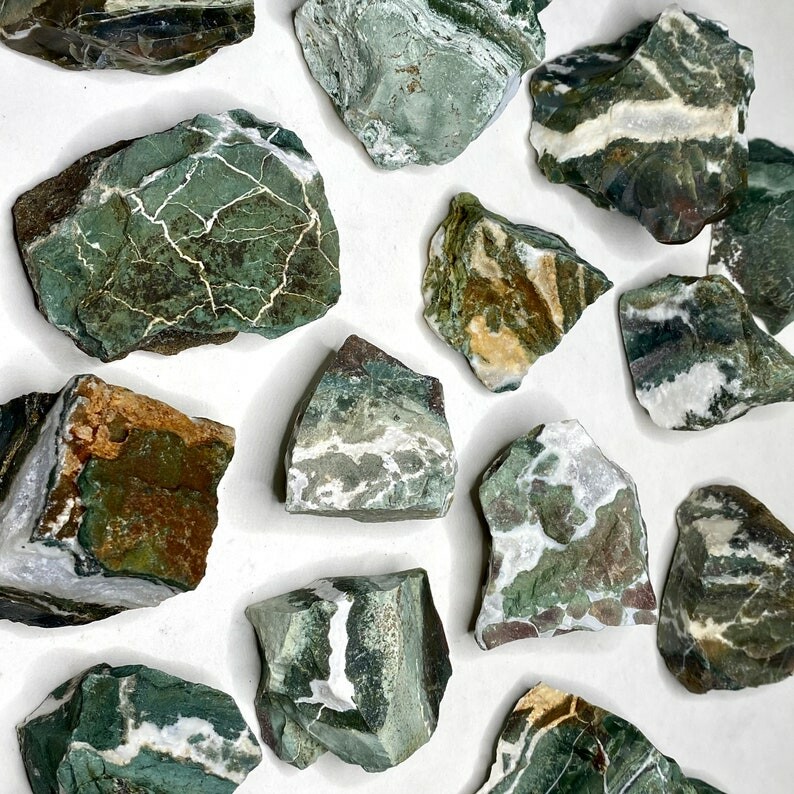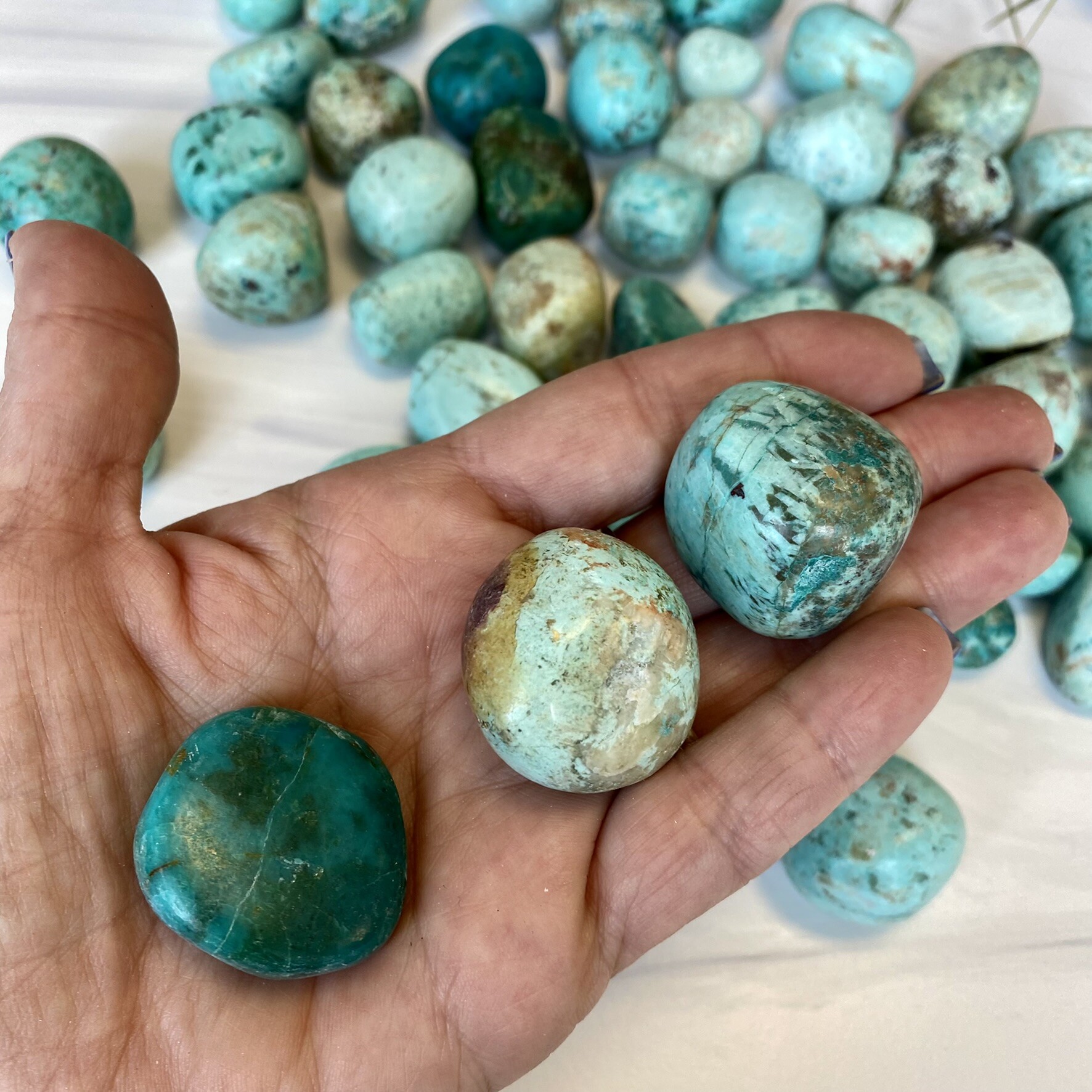
Turquoise
Peruvian, Indian, and others
Key Words:
Travel protections
Horsemen's Stone
Talisman of Success
Clear communication
TV Radio Careers
Aids Relaxation for Accountants
Aids Relaxation for Accountants
Its unique shade of blue, often blue-green, lends it name, Turquoise, to all things of this tranquil hue. The delicate veining or mottled webbing in cream or brown is inherent to the stone and serves to enhance its character.
The name Turquoise is derived from the French, pierre turquoise, meaning “Turkish stone,” because the trade routes that brought Turquoise to Europe from the mines in central Asia went through Turkey, and Venetian merchants often purchased the stone in Turkish bazaars.
In India, turquoise is known as ‘phiroza’ and ‘December birthstone’.
In ancient Mexico turquoise was believed to be a stone of the Gods.
In Asian countries like India, Persia and Afghanistan, people had a belief that wearing Turquoise promoted good health, prosperity and protected one against evil.
In Persia people believed that the reflection of the moon when seen on a turquoise stone would bring good luck to the person wearing it.
For nearly a thousand years, Native Americans have mined and fashioned Turquoise, using it to guard their burial sites. Their gems have been found from Argentina to New Mexico.

Tumbled Peruvian Turquoise
For centuries Turquoise has been recognized as possessing the power to protect riders from injury due to falls. First used as amulets by Turkish soldiers, on their persons and attached to their bridles and trappings, it later came to be used for protection against falls of any kind.
Turquoise is also reputed to be influenced by the physical condition of the person who wears it. It is thought to grow pale when its owner is sick or sad, lose all color when the person dies, and gradually recover its color when transferred to a new healthy owner, its color deepening each day.
Turquoise is also reputed to be influenced by the physical condition of the person who wears it. It is thought to grow pale when its owner is sick or sad, lose all color when the person dies, and gradually recover its color when transferred to a new healthy owner, its color deepening each day.

Raw Indian Turquoise is known as
‘phiroza’ and ‘December birthstone’.
Historically, Turquoise is credited with the property of securing friendly regard, verifying the traditional saying that “he, or she, who owns a Turquoise will never want for a friend.”
In the Orient, a Turquoise ring was worn as a protector against all things evil. The proverb states: “Given by a loving hand it brings with it happiness and good fortune.” However, the ring emitted protective energy only if the stone was given by a friend. It was believed to restore clear vision to the mind when the thinking became muddled and thus ensured good fortune.
Turquoise has always been valued as an ornamental gem, often considered a symbol of male power. Anselmus de Boot, court physician of Emperor Rudolph II, wrote in 1609 that Turquoise was so highly regarded by men that no man considered his hand to be well adorned unless he wore a fine Turquoise.
Turquoise empowers men and women equally, and worn or carried, it is a talisman of luck, success, ambition and creativity.
In the Orient, a Turquoise ring was worn as a protector against all things evil. The proverb states: “Given by a loving hand it brings with it happiness and good fortune.” However, the ring emitted protective energy only if the stone was given by a friend. It was believed to restore clear vision to the mind when the thinking became muddled and thus ensured good fortune.
Turquoise has always been valued as an ornamental gem, often considered a symbol of male power. Anselmus de Boot, court physician of Emperor Rudolph II, wrote in 1609 that Turquoise was so highly regarded by men that no man considered his hand to be well adorned unless he wore a fine Turquoise.
Turquoise empowers men and women equally, and worn or carried, it is a talisman of luck, success, ambition and creativity.

Turquoise is especially recommended for accountants and computer operators for mental relaxation, for those who work in radio or television to release anxiety, and for laborers to protect from bodily harm.
As a crystal for travel, Turquoise protects you and your possessions against theft, loss or attack, helps prevent accidents, especially falls, and even guards your pet. Attached to a collar, bridle, or cage, Turquoise prevents animals from straying or being stolen, and makes horses sure-footed and obedient to their riders.




